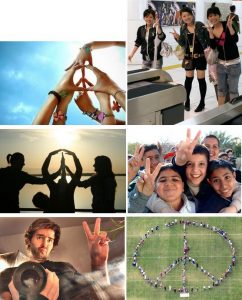Miss Courtney and Miss Leigh Ann are honing in on grace and courtesy skills this month. Please work with your little Villager at home to further emphasize these wonderful basics of social interaction and watch your child beam with pride for accomplishing them and being able to share them with you.
Grace & Courtesy in a Montessori Classroom
Grace and courtesy are an integral part of the Montessori curriculum beginning in the early childhood classroom and continuing through the elementary levels. In The Montessori Method, Dr. Maria Montessori stated, “Considering the method as a whole, we must begin our work by preparing the child for the forms of social life, and we must attract his attention to these forms”. Lessons which help children learn these social strategies are taught so they may navigate friendships and collaborations with others that will benefit them throughout their life.
Early Childhood Classroom
Grace and courtesy lessons are given as a group as a role-play. Each lesson isolates the positive behavior the teacher wishes to model. During the lesson, there are five steps. First, the specific behavior is identified and defined. Then, there is a preview of what the children will happen. Next, children observe a role play of the lesson. There is then a debriefing about what the children saw and observed. Finally, guided role play allows the children to repeat the lesson. The following are examples of lessons given.
• Accepting or declining an invitation
• Greeting or saying goodbye to another person
• Speaking in a low voice
Grace and courtesy lessons continue in the elementary environment, but the format changes from guided role plays to group problem-solving and community meetings. Because the students have entered the second plane of development, they are able to process situations differently. Small meetings between classmates or larger community meetings help students navigate social situations. During these groups, students learn the role of civil discourse, allowing one person to speak at a time. Students discuss situations, and they offer solutions. Students continually evaluate these solutions until there is one which works for everyone.
These lessons are incredibly important for children to learn, as they provide a solid foundation on how to navigate through their lives. Although children may encounter a lack of grace and courtesy in everyday life, in the Montessori classroom, the lessons they receive will help them be kind and compassionate members of society. Dr. Montessori believed that children are a hope and promise for mankind (Education and Peace). Grace and courtesy lessons are the origins of this belief.
Source: carrotsareorange.com

 Our Village Montessori
Our Village Montessori About Montessori
About Montessori Calendar
Calendar Blog
Blog Admissions
Admissions Contact
Contact

501.944.4483